If you’re one of the 40 million people in the US who suffer from an anxiety disorder, you understand how disabling these ailments can be.
However, many people have learned that a well-trained service dog can help ease some of the symptoms of severe anxiety.
But unfortunately, many anxiety sufferers aren’t enjoying the benefits these four-footers can provide because they don’t know how to get a service dog for anxiety — they don’t even know where to start.
Don’t worry: We’ll explain everything you need to know to get a service dog to help with your anxiety below.
What’s the Difference Between a Service Dog, an Emotional Support Dog, and a Therapy Dog?
There are a few different types of assistance dogs: service dogs, emotional support animals, and therapy dogs.
All three provide comfort and assist humans, but each animal serves a unique purpose and has its own set of rules that come along with it. We’ll discuss the primary differences between these various types of helping canines below.
Service Dog
The Americans with Disabilities Act (ADA) defines a service dog as a dog who is:
…individually trained to do work or perform tasks for the benefit of an individual with a disability, including a physical, sensory, psychiatric, intellectual, or other mental disability.
Service dogs perform a wide range of tasks for their disabled handler and the training process is intense. Learning all the necessary obedience and task training, as well as conditioning near-perfect public manners, can take over two years and only a small percentage of dogs successfully complete the training.
There is no certification, registration, or testing required by the Americans with Disabilities Act (ADA), but service dog teams are encouraged to complete the Public Access Test to affirm that their training efforts have been successful, and ongoing training is recommended for the entirety dog’s working life.
But despite the fact that service dogs needn’t be certified or registered, it isn’t wise to try to game the system or take advantage of the laws protecting service dogs and their people. Misrepresenting an untrained dog as a service dog can result in hefty fines and, depending on the state, result in a misdemeanor.
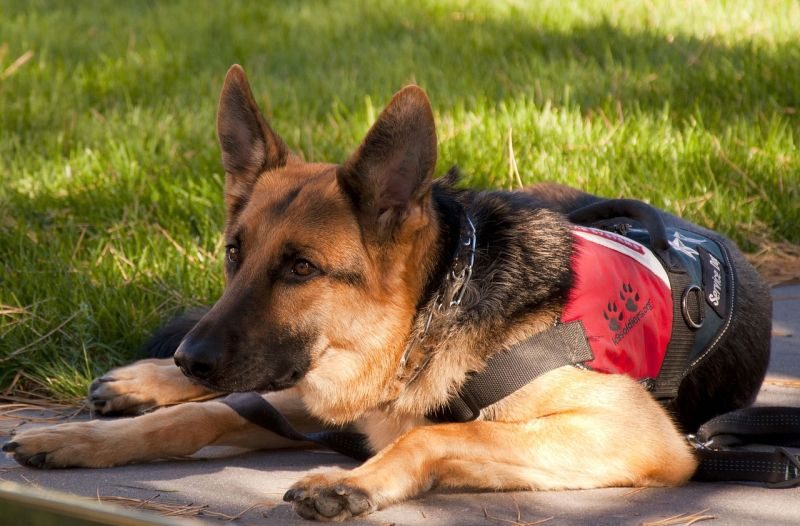
Emotional Support Animal
Emotional support animals (ESAs) are often confused with service dogs, but they are quite different.
Emotional support animals are, essentially, prescription pets — they don’t have to undergo any of the extensive training that service dogs receive. Their sole purpose is to provide comfort to their owner.
That isn’t to say you can’t or shouldn’t train an emotional support dog — there are plenty of great skills you can teach an ESA. And teaching these skills to an ESA might eventually even qualify your dog to be registered as a full-on service animal.
There are also different rules for ESAs. Whereas service dogs are allowed to go with their handler anywhere the general public can go, ESAs don’t enjoy as many privileges as service dogs.
For example, your emotional support dog will not be allowed to accompany you in a restaurant. However, you can (in some cases) fly with your emotional support animal, and your landlord must allow you to maintain an ESA (even if pets are normally prohibited from the house or apartment).
Additionally, though service animals can legally only be dogs or miniature horses in some cases, ESAs can be any animal that brings comfort to its owner.
Recently, claiming a pet is an ESA has become an unfortunately popular method by which people get their pet into no-pets housing or to avoid paying pet rent. In most states this is a misdemeanor, and in some it’s a felony.
ESA “registries” and “certifications” are abundant online (see our list of the more legitimate sites where you can register your dog as an emotional support animal) , but as is the case with service dogs, there is no officialregistry ESAs, nor do they need to be certified by anyone.
The ADA states that:
…[certification or registration documents] do not convey any rights under the ADA and the Department of Justice does not recognize them as proof that the dog is a service animal.
People with anxiety who believe they would benefit from an ESA simply need to speak to their mental health provider and ask for a prescription to be written. Doing so is easier and cheaper than jumping through these (unnecessary) registration hoops and completely legal.
Editor’s Note: Some airlines, such as Delta, have recently changed their policies regarding flying with ESAs. Now, Delta will require owners traveling with ESAs to sign a “confirmation of animal training” form before being allowed to board. Additionally, the Department of Transportation has announced that they intend to stop treating ESAs as service animals.
Therapy Dog
Therapy dogs are the only assistance animals that provide comfort to people other than their owners.
Therapy dogs are trained to behave well in public in order to visit facilities and provide comfort to people. Hospitals, libraries, schools, and airports frequently utilize therapy dogs to ease the minds of visitors, patients and children.
Most facilities require that therapy dogs be certified by Therapy Dogs International and/or pass the Canine Good Citizen (CGC) test.
Therapy dogs are not allowed in no-pets housing, nor are they allowed in public other than the facilities to which they are invited.
|
Service Dog |
Emotional Support Dog |
Therapy Dog | |
| Basic Services Provided |
Performs specific tasks for a person with a disability |
Provides comfort and support to people suffering from emotional or mental disorders |
Provides comfort to people (typically people other than the owner) in stressful situations. |
| Training Required? |
Yes – typically quite extensive |
No |
Basic obedience training is usually necessary, although not legally required. |
| Certification Required? |
No |
No, although you need a note from a doctor, psychologist or therapist. |
No |
| Allowed on Airplanes? |
Yes |
Yes (although size restrictions may be implemented by some carriers) |
No |
| Special Housing Permission? |
Yes |
Yes |
No |
| Allowed Anywhere You Go? |
Yes |
No |
No |
Learn more facts about therapy dogs and animal-assisted therapy.
How Do Dogs Help People with Anxiety?
The polls are in and everyone agrees — simply owning a dog or another pet can significantly improve your mental health and even provide long-term positive effects on your physical health.
“The Pet Effect,” as it’s called, is the reason ESAs came to exist. People with disabilities, especially mental illnesses, often benefit from having a companion animal to help ease their symptoms.
However, while having an ESA dog is often beneficial for owners with anxiety or other issues, simply providing comfort with their presence isn’t all that dogs can do for people with mental illnesses.
Psychiatric and anxiety service dogs are trained to perform a myriad of tasks to assist their disabled handlers.
We’ll talk about some of the tasks service dogs can perform for their human below.
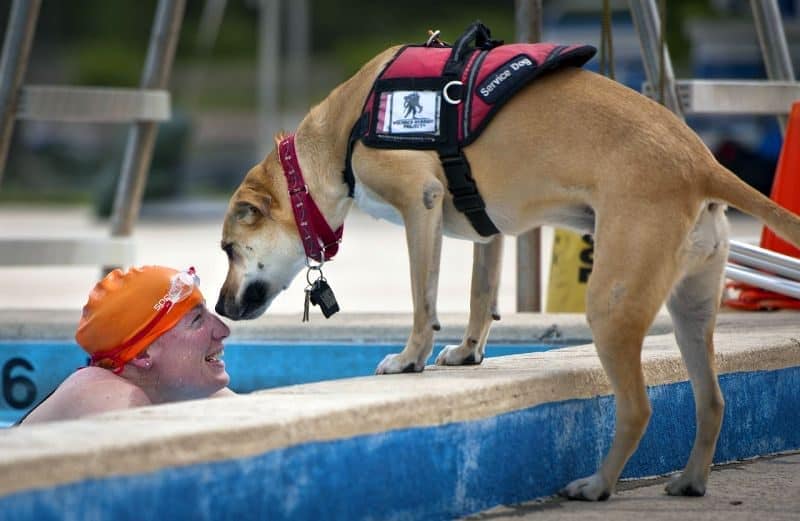
Psychiatric Service Dog Tasks
Psychiatric service dogs can perform a variety of tasks for their owners, including the following:
- For owners with post traumatic stress disorder (PTSD), psychiatric service dogs (PSDs) can be trained to do things like interrupt flashbacks, perform deep pressure therapy during nightmares and panic attacks, or search a room for intruders to help ease hypervigilance.
- For owners with depression disorders, PSDs can be trained to force their humans out of bed, interrupt self harm, retrieve drinks and medications, and other, similar tasks.
- For owners with schizophrenia and other paranoia disorders, PSDs can be taught to help their owners differentiate between hallucinations and reality, by being commanded to interact with hallucinations, thereby disproving their existence. They can also help reduce hypervigilance by being taught to perform pseudo-protection commands such as “watch my back.”
Anxiety Service Dog Tasks
Service dogs specifically trained to help ease their owner’s anxiety can be trained to do things like:
- Block or cover their owner to prevent people from touching them unexpectedly.
- Provide deep pressure therapy during anxiety attacks to help ease symptoms.
- Interrupt anxious behaviors like leg bouncing, skin picking, nail biting, hair pulling, and more.
- Guide their owner out of a store or other facility during an anxiety attack or dissociation episode.
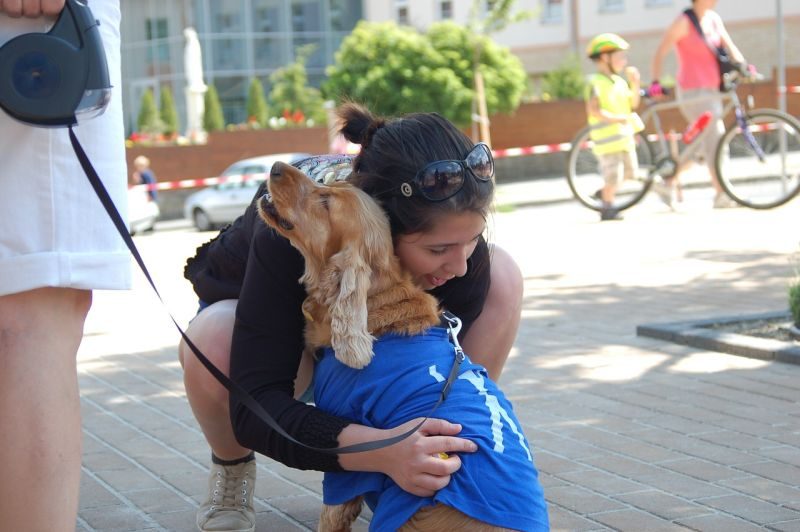
How to Determine Whether You Need an ESA or a Service Dog for Anxiety
Now that you know what the differences between an ESA and a service dog are, you can determine which type of assistance animal would best help you.
How Disabling is Your Anxiety?
According to the ADA, the legal definition of a disability is “a physical or mental impairment that substantially limits one or more major life activities.”
In the case of evaluating your need for an assistance animal, you have to take into consideration how your anxiety affects your day to day life.
Mild to Moderate Anxiety
What is mild to moderate anxiety? It’s having symptoms under control to the point that you can at least semi-comfortably go to work, run errands (such as going grocery shopping or to the bank), attend events, and live your daily life.
Therapy, medication, and other anxiety treatments may be used by a person with mild to moderate anxiety.
Having an ESA at home would be one of the therapeutic methods used to help control anxiety symptoms. The calming presence of a pet helps alleviate anxiety symptoms. An ESA is also beneficial for people who have anxiety while flying, as they’re allowed on planes with a doctor’s note.
Serious to Severe Anxiety
Serious to severe anxiety symptoms are disabling to the point of affecting someone’s day to day life in major ways. What might that look like?
- Worry, anxiety, and paranoia that prevents you from performing daily activities like going to the store or the post office, or even attending school and work.
- Panic attacks triggered by crowds, social anxiety, and other stressful situations experienced on a daily basis.
- Being on edge and overly-aware of your surroundings and other people (hypervigilance) due to trauma.
- Other anxiety disorder-related symptoms such as dissociation, becoming non-verbal, or hyperventilation.
Such people may experience severe anxiety symptoms even with medication and therapy. This is where a service dog comes in. Disabling anxiety can be managed with a service dog if the dog can perform a task to alleviate their owner’s symptoms.
Another thing to take into consideration is whether or not you’re prepared to deal with the problems many service dog handlers face, such as always being the center of attention, and having to deal with people constantly wanting to pet your pooch.
Ultimately if you believe a service dog is the right choice for you, you should bring it up to your mental health provider.
What’s the Procedure for Getting a Service Dog for Anxiety?
There are a number of ways to obtain a service dog for anxiety, and each method varies in cost, difficulty, and timeline.
Go Through a Program
The best-known method for getting a service dog is to go through a program that provides fully-trained service dogs to people with disabilities.
Puppies are typically temperament tested and handpicked from specially bred litters, and the pups are properly socialized from an extremely young age, so that they can become a good service dog.
Volunteers and professional trainers that work for the programs provide obedience and task training and prepare the dogs for public access, then pair the dog with a compatible applicant.
But unfortunately, there aren’t a lot of programs for anxiety service dogs.
Most programs, like Canine Companions for Independence and Guiding Eyes for the Blind, train service dogs for blind, deaf, and mobility impaired handlers. Most programs for psychiatric service dogs are local and have long waitlists, which often last about two years.
And though many programs grant dogs to applicants for free, some can have fees as high as $10,000.
Purchase a Trained Service Dog
Another way to get a trained anxiety service dog is to purchase one from a professional who has invested his or her own money in training the dog.
The tricky part of taking this route is being able to determine whether or not the trainer is legitimate.
There are many scammers in the market, who target disabled people and try to sell them extremely expensive, yet poorly trained “service dogs.”
Avoid people advertising on questionable sites like Craigslist and Facebook Marketplace who claim to be selling fully trained service dogs. Once you do find a reputable breeder, try to vet him or her as much as possible, too.
Reputable trainers will likely have a website or Facebook business page with testimonials from former clients, as well as or credentials from the Certification Council for Professional Dog Trainers (CCPDT) or the International Association of Animal Behavior Consultants (IAABC).
Purchasing a trained service dog for anxiety can be the most expensive option, with average fees ranging from $8,000 to $20,000.
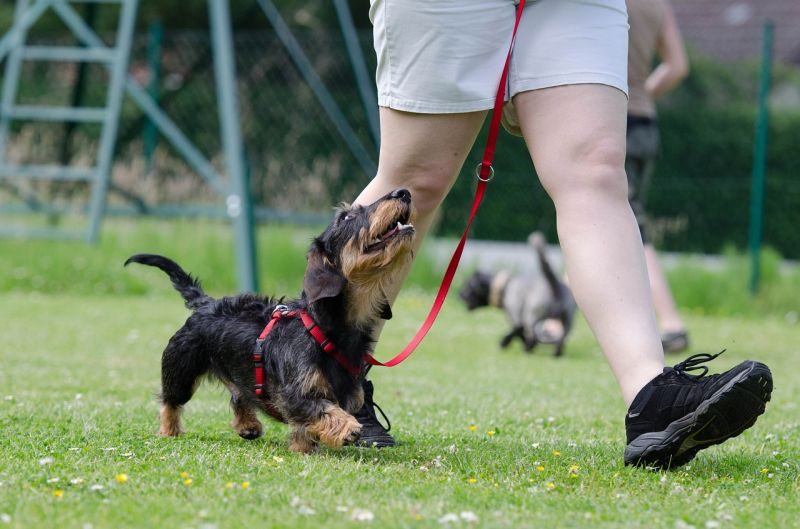
Train Your Own Service Dog
The most difficult and complicated way to get a service dog for anxiety is to train one yourself. This method also takes a lot of planning and financial preparation.
First, you have to decide whether to start with a puppy or an adult, and whether you want to purchase a dog from a breeder or adopt a pooch from a shelter or rescue.
Puppy or Adult from a Breeder
Starting with a puppy from a breeder is the most highly recommended route.
Choosing a reputable breeder — preferably one who focuses on breeding puppies to become service dogs and implements programs like Puppy Culture — allows you to control as many elements of your service dog’s upbringing as possible.
Dog temperament is a mix of both genetics and environmental upbringing, so getting a puppy that has been properly vetted genetically gives you the best chance of ending up with a solid service dog.
Reputable breeders will test their breeding dogs for overall health, usually through the Orthopedic Foundation for Animals, and ensure that all of their litters are thoroughly socialized.
They will also likely have a lifetime breeder support clause, a puppy health guarantee, and they may even begin potty, crate, and obedience training the puppers prior to sending them to new homes.
Getting a puppy, of course, is a lot of work and a big investment of time and money. Puppies from reputable breeders can cost anywhere from $1,000 to $3,000 just to purchase, and then you have to invest in vet visits, training, and so on.
Sometimes breeders also sell dogs that they either kept from puppyhood or had returned to them from an owner. Buying an adult dog from a breeder often comes with the same kinds of perks you’ll enjoy when buying a puppy, and adult dogs may already be potty, crate, and obedience trained.
However, the downside to getting an adult is that the dog may not have been raised in a manner conducive to becoming a service dog — especially if the dog was returned to the breeder from its past owner
Puppy or Adult from a Shelter or Rescue
There are a number of benefits that come with getting a puppy or adult from a shelter or rescue.
Animal welfare organizations often have to abide by certain laws that require them to send animals home spayed or neutered, fully vaccinated, microchipped, and generally healthy.
Adoption fees are also much lower than breeder prices. Fees typically range from $50 to $700 and may include behavioral support and free follow-up vet care. Some shelters even do free adoption days.
There are major risks, however, in trying to train a rescue dog to become a service dog.
For example, shelters rarely have background information on their dogs. This means that a puppy may have never been socialized, he may have congenital health concerns that no one knows about, or he may have had an impactful experience with something that will negatively affect his behavior for life.
Unfortunately, the likelihood of successfully training a shelter dog to become a competent service dog is low. If you’re dead-set on adopting rather than purchasing, you should coordinate with the shelter’s behavioral staff, or hire a trainer to temperament test dogs you are considering.
Once you’ve chosen your service dog prospect, you need to outline your training needs. Service dogs must master basic through advanced obedience, be solidly potty trained and socialized, have good manners in public, and perform tasks to help you mitigate your disability.
More often than not, unless you have professional training experience, professional assistance will be necessary at some point in the owner-training process.
Many owners are able to at least complete socialization and basic obedience on their own, but advanced obedience and task work can be difficult and require some professional problem solving.
Do Anxiety Service Dogs Have to Wear a Vest?
The prevalence of guide dogs has led the general public — including business owners — to expect service dogs to look a certain way.
When thinking of service dogs, most people imagine a dog in a vest, possibly with a guide handle or support brace. However, despite the popularity of vests, the ADA does not require assistance animals to wear a vest or be labelled as a service dog.
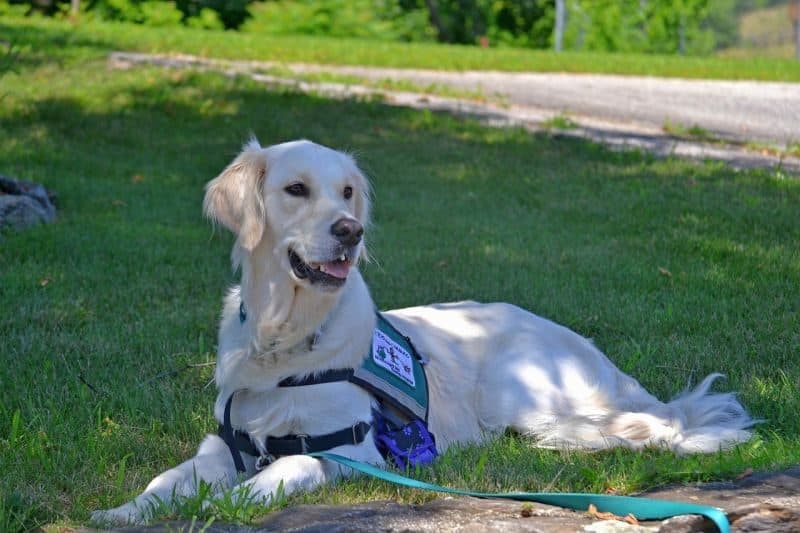
That said, most service dog handlers choose to have their dog wear a vest for a number of reasons.
For one, a vest allows the handler to put a big label on their service dog that screams “I’m working, don’t distract me!” and discourages people from interacting with their dog.
Some dog service vests also have pockets for carrying medication, medical information, or mobility harness attachments. They also simply look nice and make their owners happy.
Some dogs don’t like working with a vest on, though, and owners may opt for a bandana, leash wrap, or nothing but a collar. These solutions don’t attract much attention, nor do they discourage people from interacting with the dog.
At the end of the day, you’ll just need to decide whether a vest is a good idea for you, your service animal, and your specific circumstances.
How Do I Prove My Dog is a Service Dog?
To start, it’s important that you know your rights as an assistance animal handler. Many businesses, organizations, and landlords do not know what the laws are regarding service animals. It’s up to you to be an advocate for yourself.
What Proof Do I Need to Provide for an ESA?
Since ESAs have limited public access, proof is usually required to get them into the spaces they are permitted in.
- In no-pets housing — or simply to receive a medical financial exemption from pet rent — you will likely have to provide a doctor’s note or prescription stating that you must be allowed to have your assistance animal.
- When traveling by plane, you will need to provide your medical letter and potentially vaccination records.
While some situations may require a doctor’s note, in other cases a letter certifying your dog as an emotional service animal is all you need. Services like CertaPet make obtaining a record like this easy to do, although this practice is somewhat controversial.
What Proof Do I Need to Provide for an Anxiety Service Dog?
According to the ADA, businesses and other entities (including their staff) can only ask two questions to determine whether or not a dog is a service dog:
- Is the dog a service animal required because of a disability?
- What work or task has the dog been trained to perform?
That’s it. This means that, legally, businesses and other entities may not ask any questions about your medical condition or symptoms, nor request to see a doctor’s note. They also cannot request certification or registration paperwork since it is not legally required by the ADA.
In no-pets housing and when flying you will likely need to provide a letter or prescription from your mental health provider stating your need for an assistance animal.
Many airlines only request medical documentation for dogs that are not “visibly” service dogs (e.g. anxiety and other psychiatric service dogs, dogs without vests or other gear, etc.) but bringing your medical letter and your dog’s vaccination records is highly recommended.
Where Are Service Dogs for Anxiety Allowed?
Like all other service dogs, anxiety service dogs are allowed with their handler wherever the general public can go. This includes stores, restaurants, doctor’s offices, event venues, and so on.
Some places a service dog may not be able to go include sterile spaces — like operating rooms or ICUs — or privately owned spaces like religious facilities. Tattoo and piercing parlors may also require that service dogs stay outside the suite because it may be considered a sterile area.
However, service dog or not, businesses have the right to kick a service dog out if it is unruly, unhygienic, or not housebroken.
Are Some Breeds Better at Helping Owners with Anxiety than Others?
There are a few breeds considered better for service work, but we’ll discuss a few top picks for anxiety service specifically below.
Golden & Labrador Retrievers

Goldens and Labs are the most popular service dog candidates, and they’re great dog breeds for anxiety. Generally calm, steadfast, and hardworking, retrievers are natural working dogs and the very epitome of “man’s best friend.”
Papillons

To the surprise of many, Papillons make fantastic psychiatric service dogs.
Believe it or not, these spunky little dogs are eager to please, loyal, and easy to train. They need to be socialized well early in their life, because like most small dogs they can be snappy when fearful.
Their pint-sized body makes them especially well-suited service dogs for people who prefer small dogs or don’t have the strength to control a larger dog.
Poodles

Both miniature and standard Poodles are intelligent, high-drive dogs that make great anxiety service dogs. Their aloof demeanor makes it harder for them to be impacted by their owner’s anxiety, and they always have the energy to work.
That said, they do need plenty of exercise and can become restless and destructive if not given outlets for their energy.

Are Some Breeds Poorly Suited for Anxiety Service Dog Work?
Just as there are some breeds more inclined for anxiety service dog work, there are some breeds that usually aren’t suited for anxiety service work.
We discuss two of the best examples below.
German Shepherds

German shepherds are diligent working dogs with a high drive and plenty of energy. However, many German shepherds are anxious themselves. The tendency of dogs to sense and take on their owner’s stress means that German shepherds can become even more high-strung, if paired with an anxious owner.
People wanting a German shepherd to assist with their anxiety should search for breeders who specifically focus on breeding GSDs with balanced, confident behavior.
Border Collies
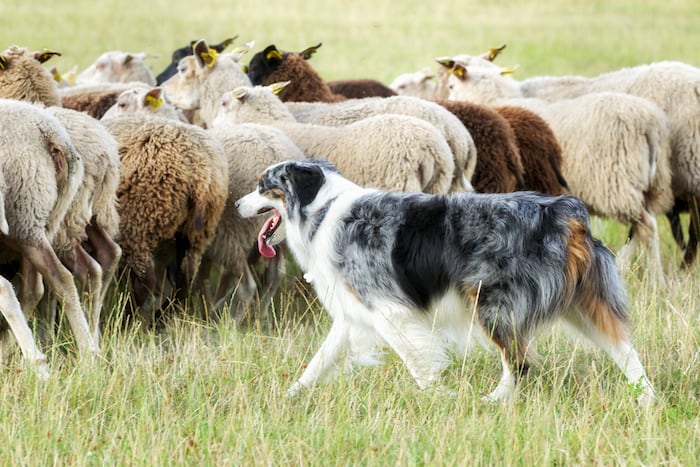
Similar to the German shepherd, the intelligence and high energy level of the border collie doesn’t make them an ideal choice for anxiety service dog work. Border collies require so much stimulation that people with disabling mental illnesses may not be able to provide them with the amount of exercise, training, and stimulation they need.
Border collies and Border collie mixes require so much stimulation that people with disabling mental illnesses may not be able to provide them with the amount of exercise, training, and stimulation they need.
Bored border collies can become very anxious, and exhibit problematic behaviors, such as pacing, stalking, and destructive chewing. These types of issues will only add to the stress of owners with anxiety disorders.
***
Going through the process of getting and training an anxiety service dog can be long and expensive, but it’s an attainable goal. If you believe you would benefit from the assistance of an anxiety service dog, talk to your mental health care provider.
Do you have questions about anything we didn’t cover here? Have any valuable advice for people seeking a service dog for anxiety?
Leave us a comment below!
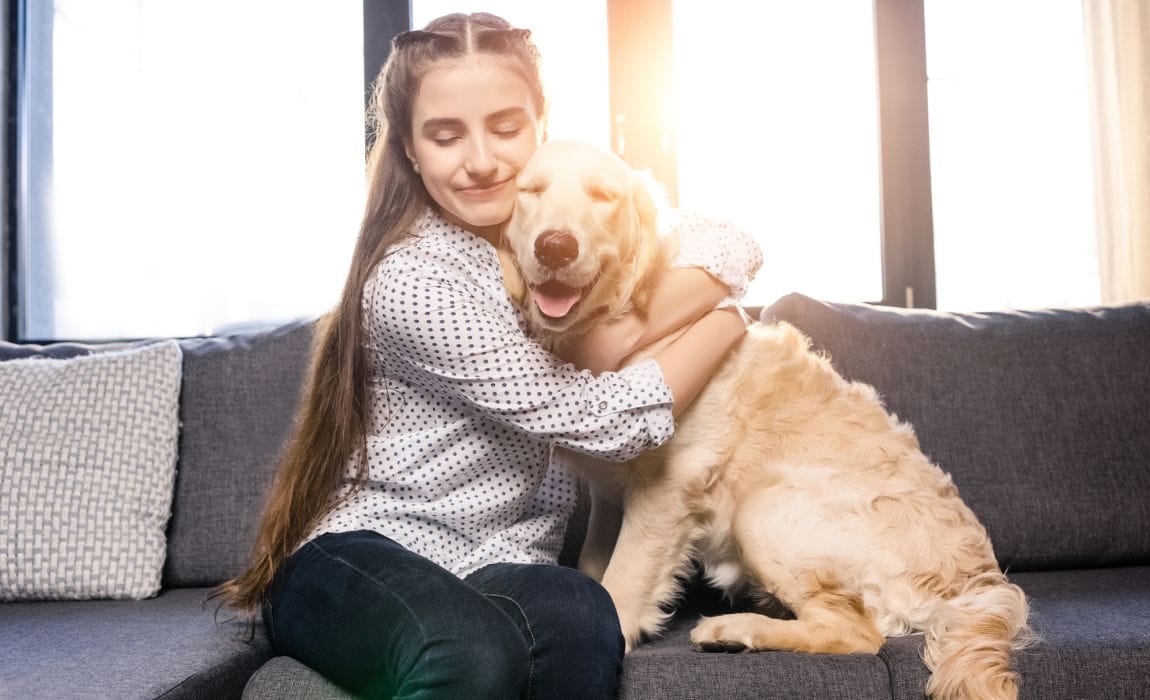

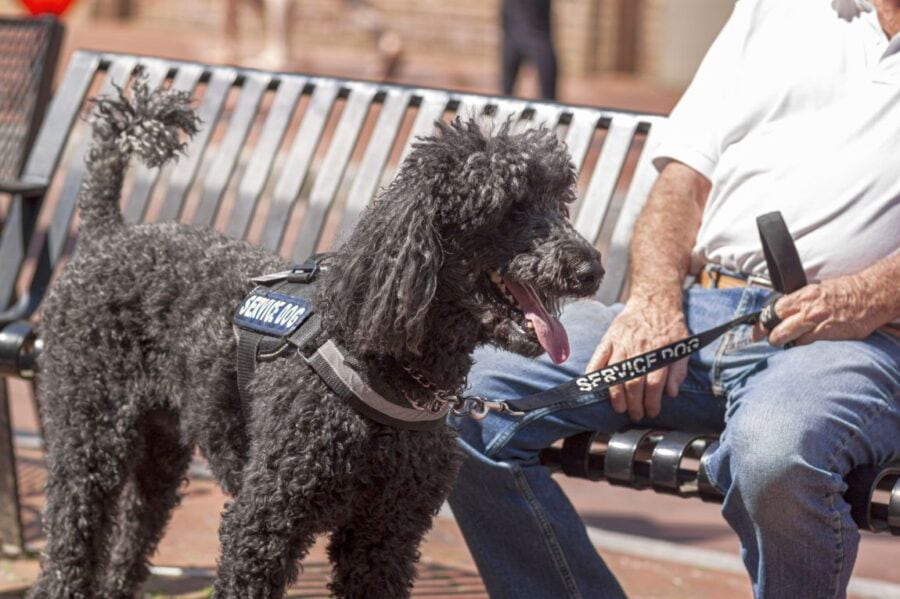



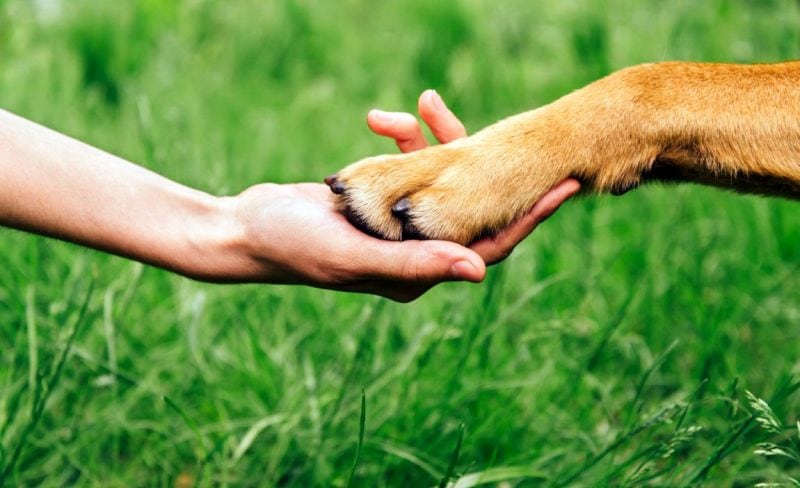

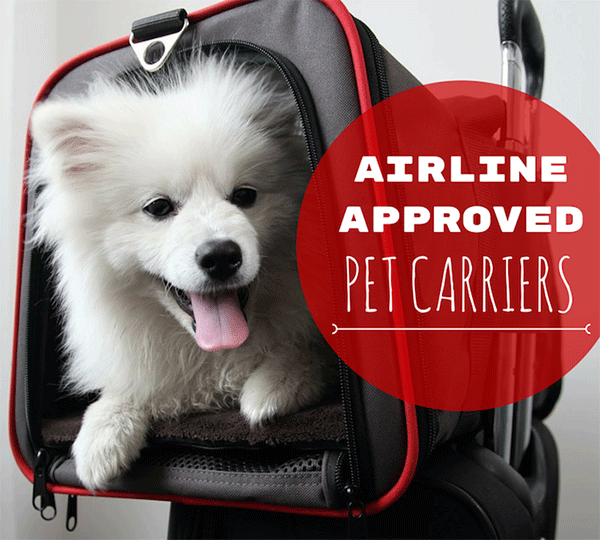




Leave a Comment